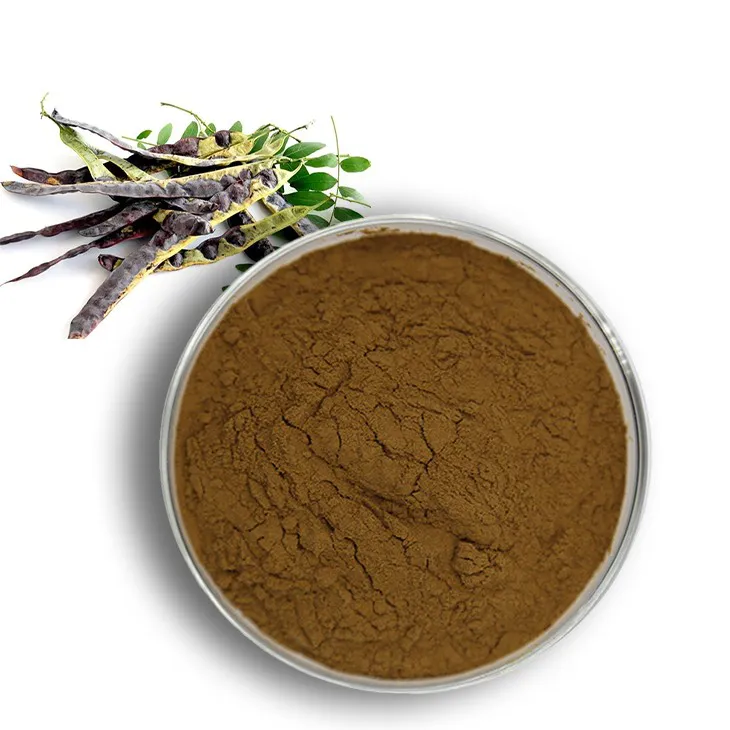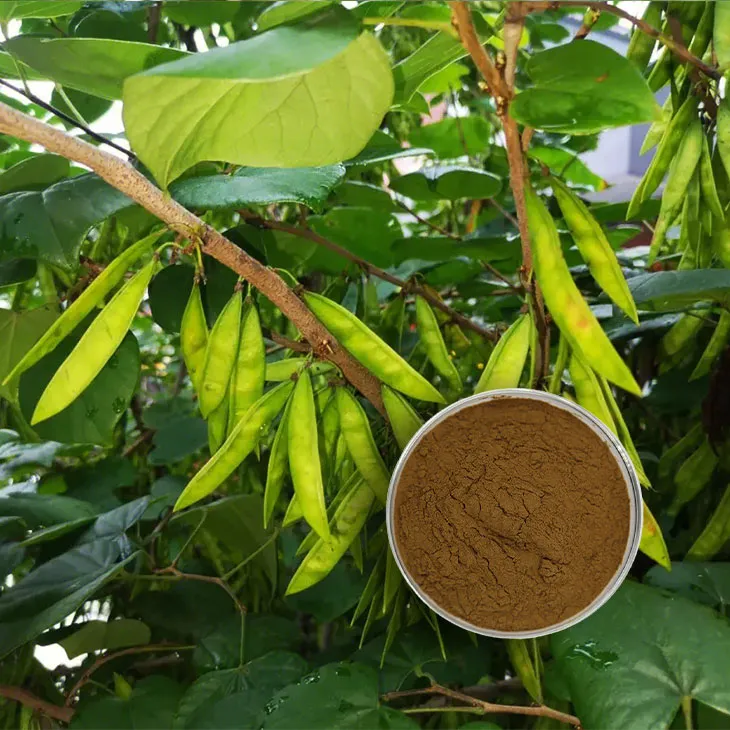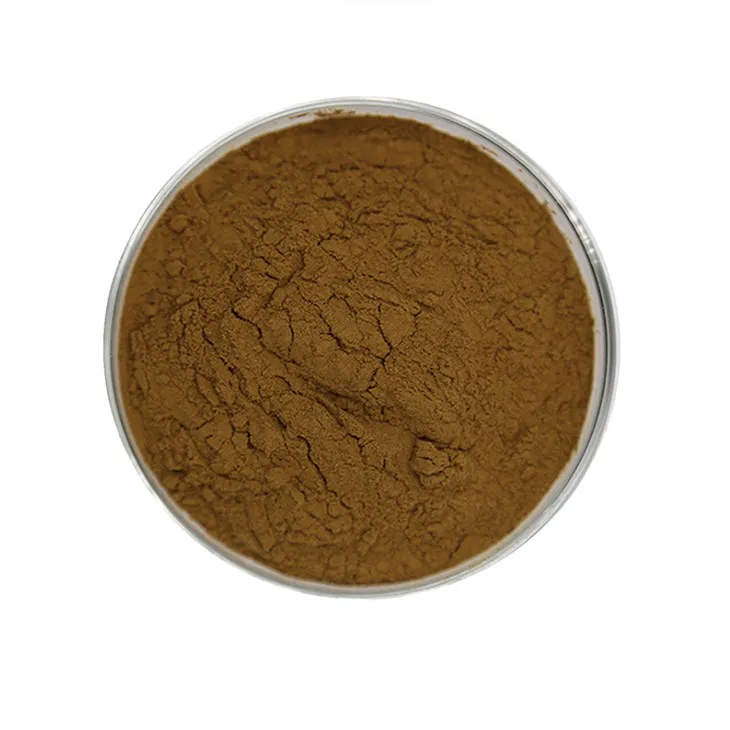- 0086-571-85302990
- sales@greenskybio.com
Saponin Extract: Uses, Advantages and Manufacturing Processes
2024-11-14

1. Introduction
Saponin Extracts are a class of natural compounds that have attracted significant attention in recent years due to their diverse properties and wide - ranging applications. These compounds are found in a variety of plant sources and have been used for centuries in traditional medicine. In modern times, their uses have expanded into multiple industries, including pharmaceuticals, cosmetics, and food.

2. Uses of Saponin Extracts
2.1 Pharmaceutical Applications
Saponin Extracts play a crucial role in the pharmaceutical industry. One of the most important aspects is their immunomodulatory effect. They can help regulate the immune system, either by enhancing or suppressing immune responses depending on the specific requirements. For example, some saponin - based drugs are being investigated for their potential to boost the immune system in patients with weakened immune functions, such as those undergoing chemotherapy or suffering from certain autoimmune diseases.
Another significant property is their anti - inflammatory action. Inflammation is a common underlying factor in many diseases, including arthritis, cardiovascular diseases, and certain types of cancers. Saponin extracts can inhibit the production of inflammatory mediators, thereby reducing inflammation and its associated symptoms. This makes them potential candidates for the development of new anti - inflammatory drugs.
The antitumor effects of saponin extracts are also of great interest. Some saponins have been shown to have cytotoxic effects on cancer cells, meaning they can directly kill or inhibit the growth of cancer cells. They may also interfere with the signaling pathways involved in tumor growth and metastasis, making them a promising area of research for cancer treatment.
2.2 Cosmetic Applications
In the cosmetics industry, saponin extracts are highly valued for their unique properties. Their foaming properties are particularly useful in products such as shampoos, body washes, and facial cleansers. When these products are used, the saponins create a rich lather that helps to cleanse the skin and hair effectively. This foaming action also gives a pleasant sensory experience to the user.
Moreover, saponin extracts possess emulsifying properties. In cosmetic formulations, emulsifiers are essential for combining oil - based and water - based ingredients. Saponins can act as natural emulsifiers, helping to create stable emulsions in products like creams, lotions, and lip balms. This not only improves the texture and appearance of the products but also enhances their stability over time.
2.3 Food Industry Applications
The food industry also benefits from saponin extracts. As natural surfactants, they can be used in food processing. For instance, they can help in the dispersion of ingredients in food products. In the production of beverages, saponins can assist in preventing the separation of components, ensuring a more homogeneous product. They can also be used in the preparation of certain food emulsions, such as salad dressings, where they help to keep the oil and water phases together.

3. Advantages of Saponin Extracts
3.1 Natural Origin
One of the major advantages of saponin extracts is their natural origin. They are derived from plants, which makes them more appealing to consumers who are increasingly interested in natural and organic products. Compared to synthetic compounds, natural saponin extracts are often perceived as safer and more environmentally friendly.
3.2 Biodegradability
Saponin extracts are biodegradable. This means that they can be broken down by natural processes in the environment, reducing the potential for environmental pollution. In contrast to some synthetic surfactants and chemicals that can persist in the environment for long periods, saponin extracts offer a more sustainable option for various applications.
3.3 Multiple Biological Activities
Another advantage is that saponin extracts often possess multiple biological activities. As mentioned earlier, they can have immunomodulatory, anti - inflammatory, and antitumor effects in the pharmaceutical field. In cosmetics, their foaming and emulsifying properties are combined with potential antioxidant and skin - conditioning effects. This multifunctionality makes them highly valuable as they can serve multiple purposes in a single product.

4. Manufacturing Processes of Saponin Extracts
4.1 Extraction from Plant Sources
The first step in the manufacturing of saponin extracts is the extraction from plant sources. Different plants contain different types and amounts of saponins. Common plant sources include ginseng, soapwort, and yucca. The extraction method typically involves using solvents such as ethanol or methanol. For example, in the extraction of ginseng saponins, the ginseng roots are first dried and then ground into a fine powder. The powder is then soaked in the solvent for a certain period of time, usually several hours to days. During this time, the saponins dissolve into the solvent.
- The choice of solvent is crucial as it can affect the efficiency of extraction and the quality of the final extract. Ethanol is often preferred as it is relatively safe and can be easily removed during the subsequent purification steps.
- Other factors such as the temperature and the ratio of plant material to solvent also play important roles in the extraction process. Higher temperatures can generally increase the extraction rate, but excessive heat may also lead to the degradation of saponins.
4.2 Purification Steps
After extraction, the next step is purification. The crude extract obtained from the extraction process contains not only saponins but also other impurities such as plant pigments, proteins, and sugars. Purification is necessary to obtain a high - quality saponin extract.
- One common purification method is chromatography. There are different types of chromatography techniques that can be used, such as column chromatography or high - performance liquid chromatography (HPLC). In column chromatography, the crude extract is loaded onto a column filled with a stationary phase, and a mobile phase is passed through the column. Different components in the extract will interact differently with the stationary and mobile phases, allowing for the separation of saponins from other impurities.
- Another purification method is precipitation. By adjusting the pH or adding certain chemicals, some impurities can be made to precipitate out of the solution, leaving the saponins in the supernatant. This method is relatively simple and cost - effective, but it may not achieve as high a level of purification as chromatography.
4.3 Quality Control
Quality control is an essential part of the manufacturing process of saponin extracts. Quality control ensures that the final product meets the required standards for different applications.
- One aspect of quality control is the determination of saponin content. This can be done using various analytical methods, such as spectrophotometry or HPLC. By accurately measuring the saponin content, manufacturers can ensure that the product has the desired potency.
- Another important factor is the purity of the extract. Impurities can affect the performance and safety of the product. Therefore, strict limits are set for the levels of impurities in saponin extracts. Quality control also involves testing for the presence of contaminants such as heavy metals and pesticides, which can be harmful if present in the extract.
- Stability testing is also carried out. Saponin extracts may degrade over time, especially under certain storage conditions. By conducting stability tests, manufacturers can determine the shelf - life of the product and recommend appropriate storage conditions to ensure the product remains effective during its intended use.

5. Conclusion
Saponin extracts are versatile natural compounds with a wide range of uses in pharmaceuticals, cosmetics, and food industries. Their advantages, including being natural, biodegradable, and having multiple biological activities, make them an attractive option for various applications. The manufacturing processes, from extraction to purification and quality control, are crucial in ensuring the production of high - quality saponin extracts. With ongoing research, it is expected that the potential of saponin extracts will be further explored and exploited in the future.
FAQ:
What are the main applications of saponin extract?
Saponin extract has wide applications. In the pharmaceutical industry, it can be used for its immunomodulatory, anti - inflammatory, and antitumor effects. In cosmetics, it benefits from its foaming and emulsifying properties to enhance product texture. In the food industry, it can act as a natural surfactant.
What are the advantages of saponin extract?
The main advantages of saponin extract are that it is natural, biodegradable, and often has multiple biological activities.
What is the general manufacturing process of saponin extract?
The manufacturing process of saponin extract typically involves extraction from plant sources, followed by purification steps, and quality control to ensure high - quality extracts for different uses.
Can saponin extract be used in medicine? What are the effects?
Yes, it can be used in medicine. Saponin extract can have immunomodulatory, anti - inflammatory, and antitumor effects in the pharmaceutical field.
How does saponin extract work in cosmetics?
In cosmetics, saponin extract works by virtue of its foaming and emulsifying properties, which enhance the texture of the products.
Related literature
- Saponins: Properties, Applications, and Health Benefits"
- "The Role of Saponin Extracts in Modern Pharmaceuticals"
- "Saponin - Based Natural Surfactants in the Food Industry"
- ▶ Hesperidin
- ▶ citrus bioflavonoids
- ▶ plant extract
- ▶ lycopene
- ▶ Diosmin
- ▶ Grape seed extract
- ▶ Sea buckthorn Juice Powder
- ▶ Beetroot powder
- ▶ Hops Extract
- ▶ Artichoke Extract
- ▶ Reishi mushroom extract
- ▶ Astaxanthin
- ▶ Green Tea Extract
- ▶ Curcumin Extract
- ▶ Horse Chestnut Extract
- ▶ Other Problems
- ▶ Boswellia Serrata Extract
- ▶ Resveratrol Extract
- ▶ Marigold Extract
- ▶ Grape Leaf Extract
- ▶ blog3
-
High purity olive leaf extract
2024-11-14
-
Lavender oil extraction method
2024-11-14
-
100% organic virgin sea buckthorn fruit oil
2024-11-14
-
Lotus leaf extract powder factory in China
2024-11-14
-
China aged garlic extract supplier
2024-11-14
-
Deer antler extract powder manufacturer
2024-11-14
-
Saw palmetto extract vs whole herb
2024-11-14
-
Mangosteen extract powder
2024-11-14
-
Rose Hip Extract
2024-11-14
-
Gynostemma pentaphyllum extract
2024-11-14
-
Black Pepper Extract
2024-11-14
-
Aguaje Extract
2024-11-14
-
Lotus leaf extract
2024-11-14
-
Calendula Extract
2024-11-14
-
Alfalfa Meal
2024-11-14
-
Hericium erinaceus extract powder
2024-11-14
-
Camu Camu Extract
2024-11-14





















